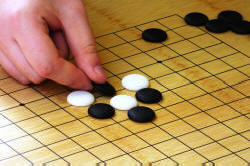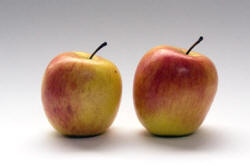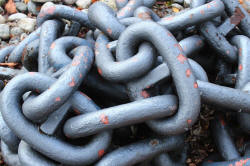Pronouns and pro-forms: the overview

There are a number of guides on this site to pronouns and pro-forms
of one kind or another.
This page is the overview with links to them. If you are looking
for something specific, click here to skip to the
links to other guides.
 |
What are pronouns? |
The usual (and only partially correct) definition of a pronoun is that it is a word or phrase which stands for a noun. So, for example, the words in the following, in red, are pronouns:
- I dropped the glass and it broke
- Mary needed the tickets so Peter gave them to her
- When he called, John told me the news
- Someone stole his wallet
- Harry made himself dinner
- Have you forgotten something?
- I know the man who owns it
- Which do you want?
There are some things to notice about pronouns in general.
- Usually, the noun that a pronoun stands for comes first and
the pronoun refers back to it.
In sentences a. b. and e., the pronouns it, them, her and himself stand for the glass, Mary, the tickets and Harry, respectively, and all the nouns precede the pronouns. This is called anaphoric reference.
However, in sentence c., the pronoun, he, comes first and the reader / hearer has to wait for the noun (John) to understand what it is. This is called cataphoric reference and is less common. - In sentence e. the pronoun, himself, stands for Harry but is in a special class of pronouns called reflexive pronouns. These pronouns must always follow the noun.
- It is not always possible to know what the pronoun is
standing for because the use is indefinite. In sentence d,
the pronoun is someone but we only know that it refers
to a person. We do not know which person so we call the
pronoun indefinite.
The same thing is happening in sentence f. We know that the pronoun, something, stands for a thing of some sort (not a person) but we do not know what. - In sentence h. we have what is called an interrogative pronoun, which, but we do not know what exactly it stands for so the use is also indefinite. Other interrogative pronouns are what, who, whom and whose.
- Pronouns do not always stand for nouns.
In sentence f., the pronoun may be standing for a noun but it could also be standing for a clause so the answer could be either
Yes, my keys
or
Yes, to ask Mary to the party - A class of pronouns are called relative pronouns and in sentence g. we have an example, who, which stands for the man. The pronoun it refers back to something mentioned before and known to the speaker and the hearer.
 |
Pro-forms vs. pronouns |
Linked below, you will find a guide to pro-forms on this site so
we'll make the distinction clear here.
Pro-forms can stand for many different concepts so, for example:
- In the following, all the words
in red are pro-forms and pronouns
I saw the car and bought it
She's the person who told the story
I tried but couldn't manage it
The majority of pronouns in English are also pro-forms, but that is not to say that they all are or that all pro-forms are pronouns, of course. - In the following, the words in
red are pro-forms but not pronouns:
John asked me to wait and I did so
Two of the children came early but the rest were late
In the first example, the words did so stand for wait but it is a pro-form only because it refers to an verb.
In the second example, the rest stands for the other children but it is not a pronoun, it is a noun. - In the following, the words in
red are pronouns but not pro-forms
because we do not know what they stand for:
Whom did you tell?
It was snowing hard
and in neither of these sentences can we say what the pronoun stands for.
Pro-forms are considered in a guide in the in-service section of the site and also, in passing, in the guide to ellipsis and substitution so we won't consider them further here.
 |
Two kinds of pronouns |
The major division of the closed class of pronouns in English is between personal pronouns and indefinite pronouns.
The way they are analysed on this site is more or less as follows:
- personal pronouns
fall into these categories:- subject pronouns
- Singular – I, you, he, she, it
- Plural – we, you, they
- object pronouns
- Singular – me, you, him, her, it
- Plural – us, you, them
- possessive pronouns
- Singular – mine, yours, his, hers
- Plural – ours, yours, theirs
- reflexive pronouns
- Singular – myself, yourself, himself, herself, itself
- Plural – ourselves, yourselves, themselves
- subject pronouns
- indefinite pronouns
are considered in these categories:
- relative pronouns – who, whom, which, that, whose
- interrogative pronouns – who, what, which, whom, whose
- demonstrative pronouns – this, that, these, those (the former, the latter, the one, the other)
- universal and distributive pronouns – everyone, everybody, each, everything, all, either, both
- multal pronouns – many, more, much, most
- paucal pronouns – few, fewer, fewest, little, less, least
- the some- and any- series – someone, anyone, something, anything etc.
- negative pronouns – nothing, none, nobody, no-one, neither
- one
- several, a lot, enough
 |
The links |
Here are the links to related guides on the site which will provide more detail concerning the classes of pronouns outlined in this brief overview.
| the word-class map | this link takes you to the index of guides to word classes on this site |
| personal pronouns | those which refer to identifiable people and things |
| impersonal and indefinite pronouns | the guide to another major class of pronouns |
| relative pronoun clauses | for the guide to a complex area |
| pro-forms | for the guide to the area |
| ellipsis and substitution | this guide considers ellipsis and pro-forms because their properties are similar in terms of cohesion |
| pronouns in English | go here for a list (new tab) |
| determiners | many pronouns can, in other environments, act as determiners |
| demonstratives | go here for a simple guide to demonstrative determiners and pronouns |
